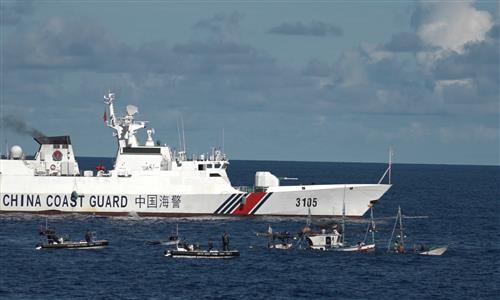Rise of the red rovers
KUALA LUMPUR: There has been a surge in the number of Chinese travellers coming to Malaysia following the increase of red-eye flights here from their home country, according to Malaysia Airports Holdings Bhd (MAHB).
Red-eye flights are rising in popularity, with officials reporting a 28% increase of such flights arriving at KL International Airport (KLIA) during the first half of the year compared with the same period last year, with flights from China accounting for 74% of them.
A red-eye flight refers to a flight that departs at night and arrives the next morning.
ALSO READ: Six extra direct flights between Penang and China soon
This increase in nighttime flights is expected to help Malaysia hit its target number of tourists, including five million Chinese visitors.
The 28% increase in flights in the first half of the year translates to an additional 313 flights per month.
“A significant portion of this increase is attributed to flights to and from China, which accounted for 232 extra flights or 74% of the total growth in red-eye flights,” MAHB said.
“The YoY performance for China-specific red-eye flights shows a remarkable increase of 168%, with the number of flights skyrocketing from 138 to 370 per month.
ALSO READ: More Indian tourists flocking to Malaysia after visa waiver
“KLIA also experienced a +20% YoY increase in red-eye departures, with flights to China making up 61% of the additional 171 monthly flights,” it told The Star.
Red-eye flights, characterised by departures after 9pm and arrivals before 5am the following morning, have become pivotal in meeting rising passenger demand and strengthening the airport’s operational capabilities.
MAHB said the considerable increase in red-eye flights, particularly those linked to China, highlights the growing intercontinental travel demand and “reinforces KLIA’s status as a key aviation hub in the region”.
In response to the increasing number of Chinese passengers, KLIA has boosted its efforts to enhance the passenger experience by increasing the number of Mandarin-speaking Airport CARE Ambassadors.
“Currently, KLIA employs 36 Mandarin-speaking ambassadors with nine on duty per shift, a significant improvement from the pre-pandemic period when only four Mandarin-speaking ambassadors were available per shift.
“Our Airport CARE Ambassador team now operates at full capacity 24/7, with a robust force of 280 ambassadors, including Mandarin speakers,” MAHB added.
It said plans are under way to install an additional 10 autogates from the current 10 to improve passenger flow and reduce wait times.
Tourism Malaysia director-general Manoharan Periasamy said red-eye flights have become popular because they allow travellers to have more time at their destination.
The visa-free agreements that Malaysia signed with China and India have made weekend travel more convenient as well, he added.
Manoharan said Tourism Malaysia plans to increase the number of officers at its information desk at the airport to cater to the increase in the number of foreign visitors.
“At least two staff members who can speak English and Mandarin will be at the helpdesk.”
Short-haul flights are those less than three hours in duration, while flights lasting between three and six hours are considered medium-haul flights.
Manoharan said Tourism Malaysia will focus on short-haul and medium-haul countries.
Malaysian Inbound Tourism Association president Mint Leong said red-eye flights are crucial in attracting more Chinese tourists and believes this will significantly contribute to achieving the goal of attracting five million Chinese tourists to Malaysia this year.
“Over 70% of tourists prefer ‘flexible independent travel’ and are likely to choose midnight flights.
“This allows them to save on travel time without needing to take (extra) leave from work and they save on hotel costs,” she said.
Related stories:
Six extra direct flights between Penang and China soon
More Indian tourists flocking to Malaysia after visa waiver
Japanese tourists increased by 50% in 2024, says Ministry
Strengthening Muslim-friendly tourism and hospitality in Malaysia
 Manila urged to stop abusing arbitration, disrupting South China Sea
Manila urged to stop abusing arbitration, disrupting South China Sea
Despite the fallacies of the illegal South China Sea Arbitration Award released on July 12, 2016 being exposed, the Philippines ...







